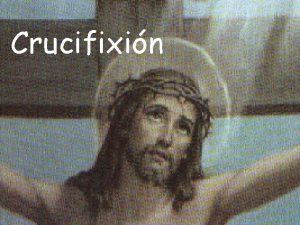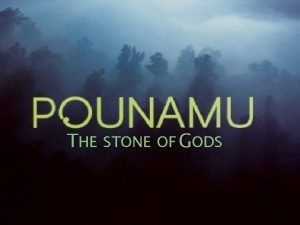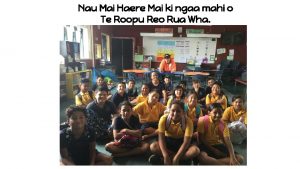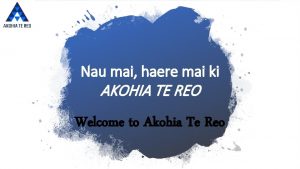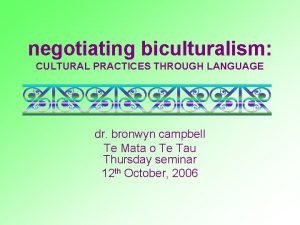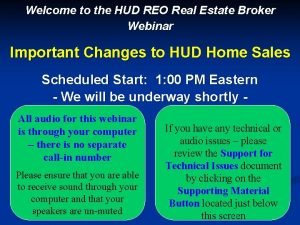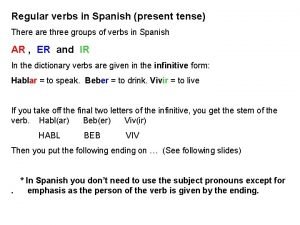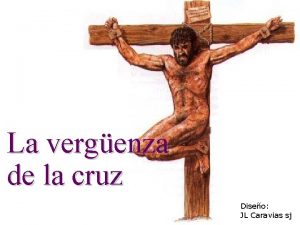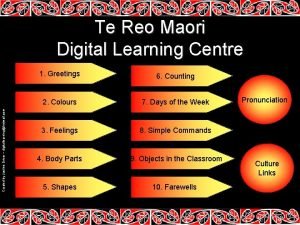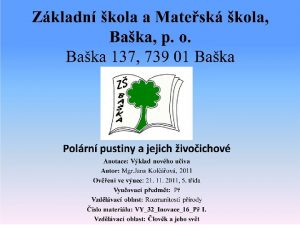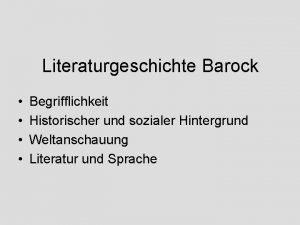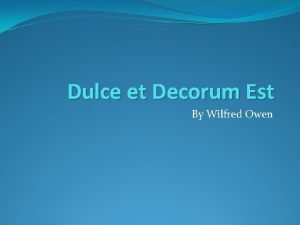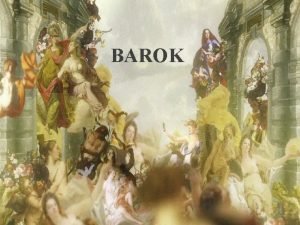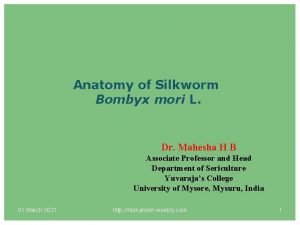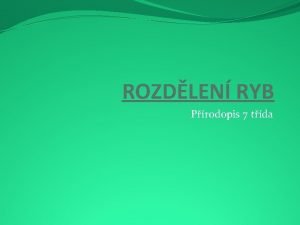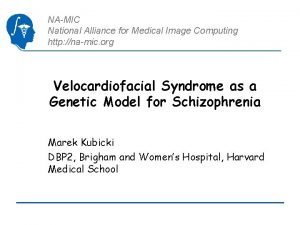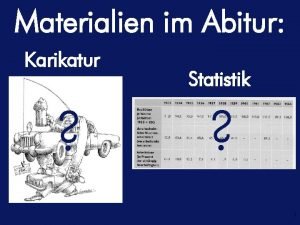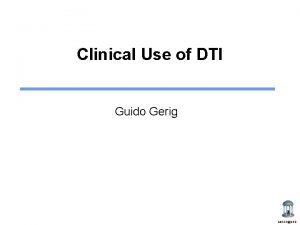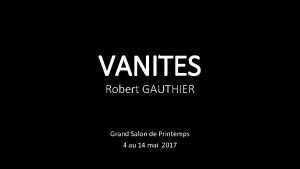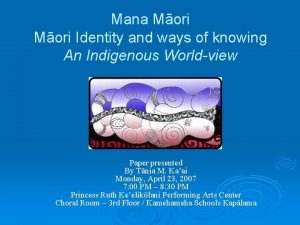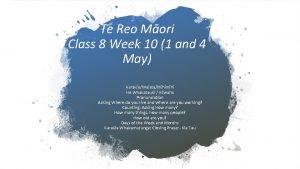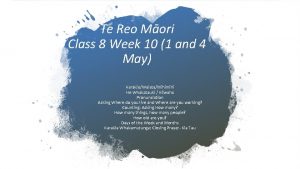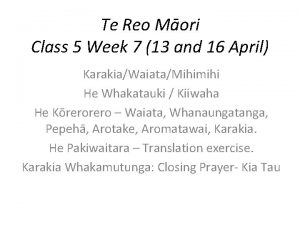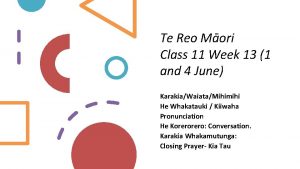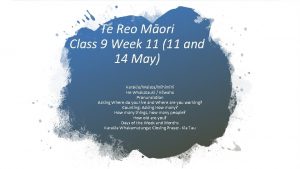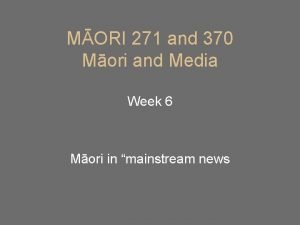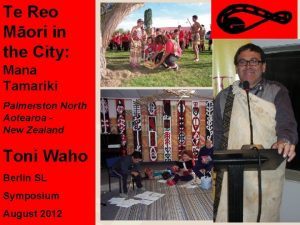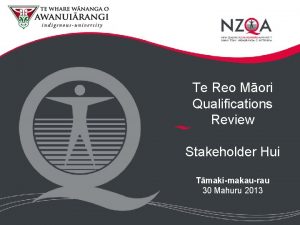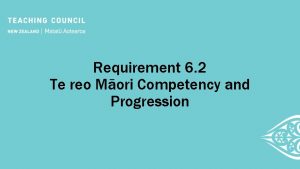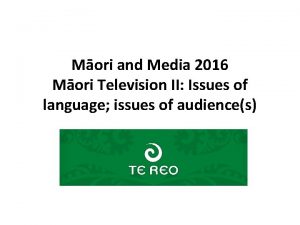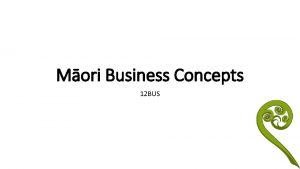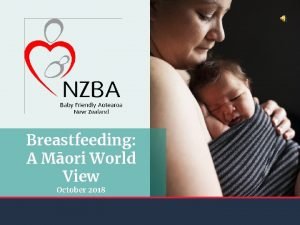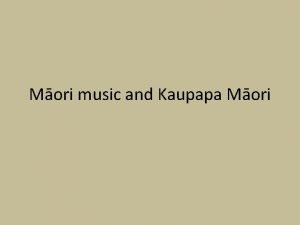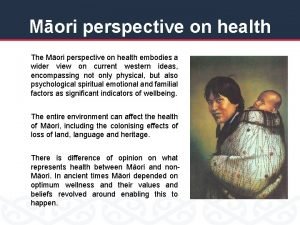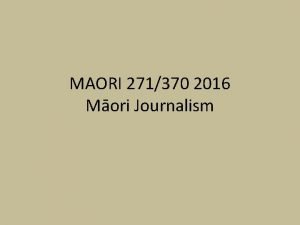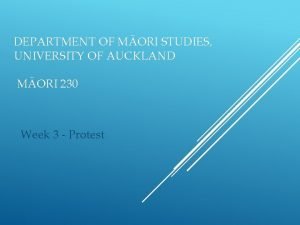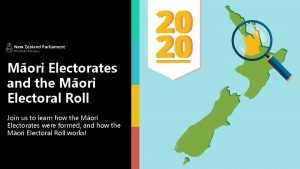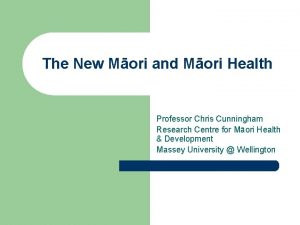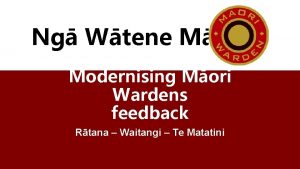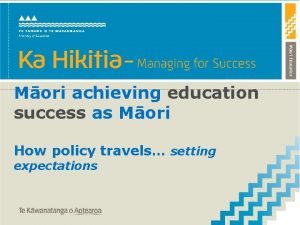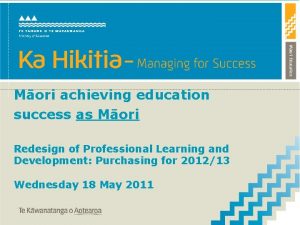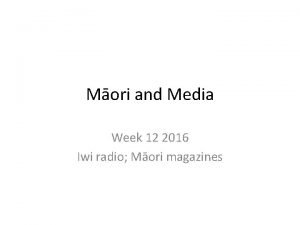Te Reo Mori Class 7 Week 9 27



























- Slides: 27

Te Reo Māori Class 7 Week 9 (27 and 30 April) Karakia/Waiata/Mihimihi He Whakatauki / Kiiwaha Pronunciation Asking Where do you live and Where are you working? Counting: Asking How many? How many things, how many people? Karakia Whakamutunga: Closing Prayer- Kia Tau

Karakia Timatanga ANZAC Prayer.

He Whakatauki: Aroha mai, aroha atu. Love received and love given He Kiiwaha: Ka nui te pai! All good! It is great!


Vowel Song – Piata piata ngā whetu-Twinkle twinkle a e i o u a aa ea ia oa ua e ae ee ie eo ue i ai ei ii oi iu o ao eo io oo ou u au eu iu ou uu



How do we ask “ Where are you living? ” Kei hea koe e noho ana? Kei + Place or place name + subject + e noho ana Kei hea koe e noho ana? Where are you living? Kei + Tāmakimakaurau + ahau + e noho ana I am living in Auckland.

Kei hea a Siong e noho ana? This Photo by Unknown Author is licensed under CC BY-SA-NC This Photo by Unknown Author is licensed under CC BY-SA

Kei hea te Kaiako e noho ana? This Photo by Unknown Author is licensed under CC BY-SA

Kei hea koe e noho ana? Kei _________ahau e noho ana.

How do we ask, “ Where are you working? ” Kei hea koe e mahi ana? Kei+Place or place name + subject + e mahi ana Kei hea koe e mahi ana? Where are you working? Kei + Makitānara + ahau + e mahi ana I am working at Mc. Donalds.

Kei hea a Paul e mahi ana? • Kei Aotearoa a Paul e mahi ana. • Kei te whenua a Paul e mahi ana. • Kei te moana a Paul e mahi ana. • Kei te rawhi whakaaturanga a Paul. • Kei te whare puka a Paul. • Kei te whutupaoro riki a Paul. Change the place / place name, the subject – person or people, the activity and what else can we communicate using this sentence structure? This Photo by Unknown Author is licensed under CC BY-SA

He Waiata – Ngā wāhanga o te tinana Māhunga Pakihiwi Puku Hope Waewae Taringa whatu ihu waha e

Counting – Te Tatau. There are two words for ‘one’, tahi and kotahi. Normally kotahi is used for the number ‘one’ and tahi is used with other numbers. When counting out things each number is preceded by ka. E hia? is used to ask how many things there are. Tokohia? is used to ask how many people there are. ‘E’ is used only if the word for the number (or the first word of the number) has only one long vowel or two short vowels. If the answer begins with the numbers kotahi (one) or tekau (10) omit the ‘e’. With kotahi remember to use te rather than ngā.

E hia ngā kau?

E hia ngā manu?

E hia ngā whare?

Counting (10 -100) By now, you have learnt the numbers 1 through to 10. Learning the numbers 10 to 100 builds on the numbers you have learnt and as long as you know the numbers 1 -10 then you will have little trouble with this work. Look at the following numbers below: Use E before 2 to 9 and 20 to 99. 10 tekau 16 tekau mā ono 17 tekau mā whitu 20 e rua tekau 21 e rua tekau mā tahi 22 e rua tekau mā rua 30 e toru tekau 37 e toru tekau mā whitu 49 e whā tekau mā iwa 54 e rima tekau mā whā 62 e ono tekau mā rua 71 e whitu tekau mā tahi 99 e iwa tekau mā iwa 100 kotahi rau

E hia? is used to count the number of things. E hia? is also used to ask how old somebody is. Tokohia? asks how many people? Used for people only. We say…E hia ō tau? How old are you? E hia ana tau? How old is he/she? E hia ngā tau o Rebecca? How many are the years of Rebecca? Tokohia ngā tāngata? How many people are there?

E hia ngā tau o…? Tokohia ngā tāngata? Kia ora. Amiria is 69 years old. Kia ora. Netana is 20 years old.

E hia ana tau? Tokohia ngā tāngata? Wiremu 41 Tama 9 Tarati 42

E hia ō tau? How old/young are you? Classroom share

Our Conversation from Monday continues… Aroha: Tokohia ō tuākana? Hinewai: Tokorua aku tuākana. Ko Mākere rāua ko Raiha ō rāua ingoa. Kotahi taku tungāne. Ko Rewi tana ingoa. Aroha: Tokohia ō tēina? Hinewai: Kotahi. Ko Mereana tana ingoa. Aroha: Kei hea tō kāinga ināianei? Hinewai: Kei Tāmaki-makau-rau taku kāinga ināianei. Mikaere: Tokohia ō hoa kei tō whare? Hinewai: Tokorua aku hoa. He wāhine rāua. Ka puta mai he kurī. Hinewai: Kia ora, e hoa! Ko wai te ingoa o tō kurī? Mikaere: Ko Haki tana ingoa. Hinewai: E hia ō kurī? Mikaere: E toru, ko Poto rāua ko Tio ana hoa. Aroha: Haere atu, e Haki! Kei te hiakai kōrua? Mikaere: Āe. Kei te hiakai ahau. Aroha: Pēhea koe, Hinewai? Hinewai: Āe. Kei te tino hiakai ahau. Aroha: Tēnā, haere mai ki te kai.

• Whakamāoritia I ēnei rārangi korero. – Translate these sentences into Māori and English. Kia ora koe e hoa! Kia ora! Ko wai tērā? Ko Doug tērā. Where is he staying? He is staying at home. Sorry. What’s her name? Donna is her name. Where is she living? She is living in Rotorua. She is from Canada. Is she living in Canada? No. She is living in New Zealand. Her husband lives in Canada. Where does her husband work? Her husband works at the school. He is a teacher from Canada. Kei Makitānara ia e mahi ana. He Kaiwhakahaere ia. Ko wai ngā tamariki o rāua? Kaore rāua i ngā tamariki. Ae. Aroha mai aroha atu. Kia ora…Kia ora.

Translation…Mahi Kāinga- Homework. Greetings to you friend! Greetings! Who is that over there? That over there is Doug. Kei hea ia e noho ana? Kei te kāinga ia e noho ana. Aroha mai. Ko wai tōnā ingoa? Ko Donna tōnā ingoa. Kei hea ia e noho ana? Kei Rotorua ia e noho ana. Nō Canada ia. Kei Canada ia e noho ana? Kao. Kei New Zealand ia e noho ana. Kei Canada tōnā hoa rangatira. Kei hea tōnā hoa rangatira e mahi ana? Kei te kura tōnā rangatira e mahi ana. He Kaiako ia nō Canada. She works at Mc. Donald’s as a manager. Who are their (2) children? They don’t have children. Yes, love received, love extended to them. Greetings…Greetings.

Karakia Whakamutunga
 Week by week plans for documenting children's development
Week by week plans for documenting children's development Reocentral
Reocentral Leño horizontal que el reo tenía que cargar
Leño horizontal que el reo tenía que cargar Blessing karakia
Blessing karakia Ngài đến lòng chúng nhân reo hò vui mừng
Ngài đến lòng chúng nhân reo hò vui mừng Nau mai haere mai meaning
Nau mai haere mai meaning Akohia te reo
Akohia te reo Reo technology
Reo technology Rumaki reo meaning
Rumaki reo meaning Hud.gov homesforsale
Hud.gov homesforsale Tenses chart
Tenses chart Vergenza
Vergenza Justine driver
Justine driver Polrn
Polrn Johann michael eder memento mori (1637)
Johann michael eder memento mori (1637) Kati mori
Kati mori Dulce et decorum est pro patria mori
Dulce et decorum est pro patria mori Barok
Barok Memento mori hkbp
Memento mori hkbp Anatomy of silkworm
Anatomy of silkworm Lalokoploutví
Lalokoploutví Susumu mori
Susumu mori Karikatur statistik
Karikatur statistik Guido gerig
Guido gerig Alexander mair memento mori
Alexander mair memento mori Mana mori
Mana mori Foris mori
Foris mori Istituto comprensivo di mori
Istituto comprensivo di mori


